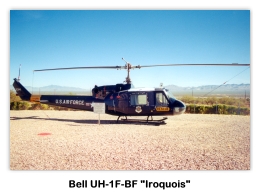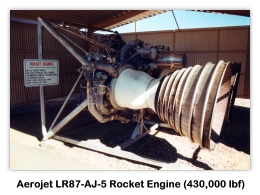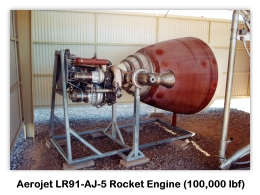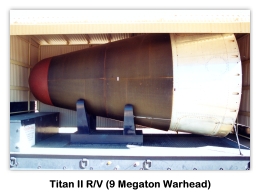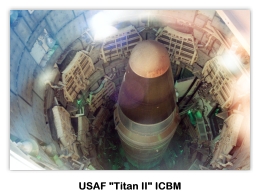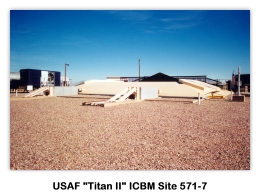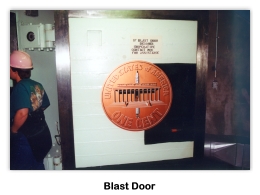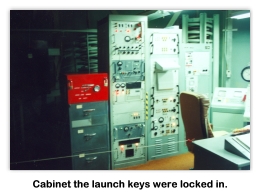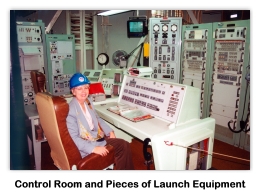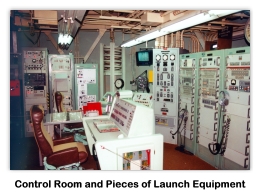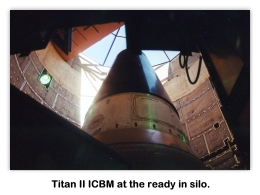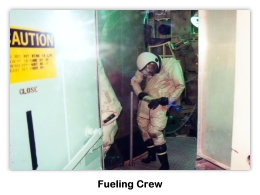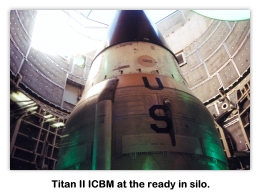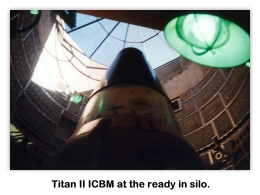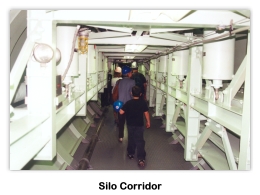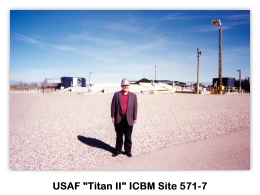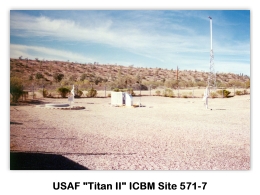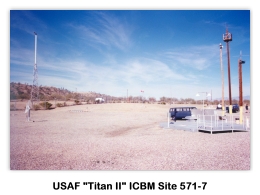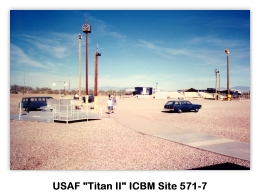


| Veteran's Memorial Freedom Garden, Quartzsite | Arizona Guide | North American F-86D Display, San Carlos |
Sahuarita — Titan Missile Museum
Arizona Aviation Museum Guide
Titan Missile Museum
1580 West Duval Mine Road
Sahuarita, Arizona 85614
Phone: (520) 791-2929 or (520) 625-7736
The Titan Missile Museum, also known as Air Force Facility Missile Site 8 or as Titan II ICBM Site 571-7, is a former ICBM missile site located at 1580 West Duval Mine Road, Sahuarita, Arizona. It is located about 15 miles south of Tucson. It is now a museum run by the nonprofit Arizona Aerospace Foundation which includes a Titan II intercontinental ballistic missile still in its silo as well as the original launch facilities. It was declared a National Historic Landmark in 1994.
The underground facilities consist of a three-level Launch Control Center, the eight level silo containing the missile and its related equipment, and the connecting structures of cableways (access tunnels), blast locks, and the access portal and equipment elevator. The complex was built of steel reinforced concrete with walls as much as 8-foot-thick in some areas, and a number of 3-ton blast doors sealed the various areas from the surface and each other.
The top level of the silo permits viewing the silo missile doors. Level 3 houses a large diesel generator. Level 7 provides access to the lowest part of the launch duct. Visitors on the "Beyond the Blast Doors" tour are allowed to stand directly underneath the missile. Level 8, at 140 feet underground, houses the propellant pumps.
Titan II missile Nuclear missiles, even at rest, are highly toxic, although the reasons may not be obvious. An inactive warhead is relatively harmless compared to the propellant used to launch the missile into space. The unique nature of the Sahuarita missile site is that all the original equipment is intact. The missile in the silo was used solely for crew training. Fuel was never loaded in the missile. The silo originally held an active nuclear missile, but the training missile replaced it when the facility was converted to a museum.
The 103-foot Titan II missile inside the silo has neither warhead nor fuel. In accordance with a US/USSR agreement, the silo doors are permanently blocked from opening more than half way. The dummy reentry vehicle mounted on the missile has a prominent hole cut in it to prove it is inert. All of the support facilities at the site remain intact, complete with all of their original equipment.
The silo became operational in 1963 and was deactivated in 1982 as part of President Reagan's policy (announced in 1981) of decommissioning the Titan II missiles. It is a common misconception that this was the result of a weapons reduction treaty, but was in fact simply part of a weapon systems modernization program. All operational Titan II silos throughout the country were demolished, including 18 sites around McConnell AFB in Wichita, Kansas, 17 sites around Little Rock AFB, Arkansas (one additional site previously damaged beyond repair in a mishap/non-nuclear explosion) and 17 other sites around Davis-Monthan AFB and Tucson, except for this one. It is now a National Historic Landmark.
The Titan II was the largest operational land based nuclear missile ever used by the United States. The missile had one W53 warhead with a yield of 9 Megatons (9,000 kilotons). The facility's highest state of alert was November 22, 1963, when President John F. Kennedy was shot. When news of the shooting broke, the keys used to launch the missile were ordered to be placed on the tables at the launch consoles to prepare for a possible launch. The Pentagon did not yet know whether the Soviet Union had committed an act of war. The keys were not, however, placed in their switches.
At launch, orders from the National Command Authority would have specified one of three pre-programmed targets which, for security reasons, were unknown to the crew. The missile base that is now the Titan Missile Museum (complex 571-7 of the 390th Strategic Missile Wing) was at the time of closure, programmed to strike "Target Two". The missiles computer could hold up to three targets, and the target selected was determined by Strategic Air Command headquarters. To change the selected target, the crew commander pressed the appropriate button on the launch console. Target 2, classified to this day, was assumed to be within the borders of the former Soviet Union, was designated as an impact blast, suggesting a hardened facility such as a Soviet missile base. Targets could be selected for air or ground burst, but the selection was determined by Strategic Air Command.
At the visitor center there is a small gift shop and a small museum putting the Titan II within the context of the Cold War. The basic tour starts with a short video on the history of the Titan II and the launch complex. Then everyone dons provided hard hats. Underground there are any number of low-hanging pieces of the structure and its equipment, and as everything is either steel or concrete, you'll appreciate the hat. The tour moves outside for a guided tour of the surface features of the complex including the hard-stands for fuel storage containers and associated control vehicles. There are also restored engines (both stages) from a Titan II missile, and a re-entry vehicle. The silo door is permanently blocked in the half-open position, with the open portion covered with glass panels to protect the missile and silo from the weather while allowing a dramatic view of the silo interior and the missile from the top.
The below ground tour starts with a walk down several flights of stairs totaling some 55 steps. Arrangements can be made for handicapped access utilizing the freight elevator. The standard tour includes a visit to the control room through the controlled access entrance including a set of 3-ton blast doors. The visit to the control room includes a simulated launch - a demonstration of the steps that would have been taken to launch the missile. Then a comfortable walk through the cableway (tunnel) to the silo to the view the missile and silo from lower down.
The basic tour takes about one hour. Special behind the scenes tours are also available. The extended tours allow access to the upper and lower levels of the control center, as well as the various other levels of the silo, antenna silos and other site features. Extended tours can take 4 to 5 hours. The museum also offers some special overnight tours on a very limited basis. The extended tours are available by reservation only. More information can be found and reservations may be made via the museum web site.
Several scenes in the 1996 film Star Trek: First Contact were shot at the site. The missile itself was depicted to be the launch vehicle for the film's Phoenix spacecraft.
The following photos were taken by Skytamer's John Shupek with a 35mm Minolta SLR circa 1999.
We need quality photos of the aircraft at this location. If you can help, please let us know via the “Contact Us” link.
References- Titan Missile Museum, website
- Wikipedia, Titan Missile Museum
- Google Earth, Satellite Image
- Shupek, John. Titan Missile Museum photos from the Skytamer Archive
Copyright © 2014 Skytamer Images, Whittier, California
All rights reserved
